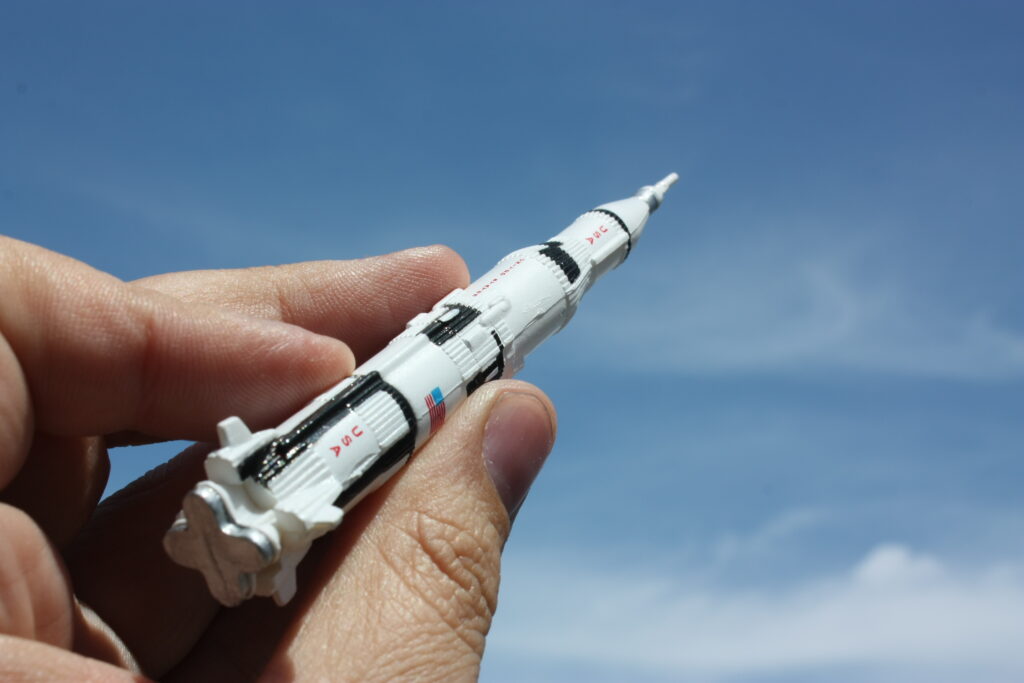The Apollo 11 Moon Landing Anniversary

July 20th marks the 54th anniversary of the Apollo 11 Moon Landing!
Apollo 11 Landed on the Moon
 In 1969, a crew of three members took their first steps on the moon: Commander Neil Armstrong, Lunar Module pilot Buzz Aldrin, and Command Module Pilot Michael Collins.
In 1969, a crew of three members took their first steps on the moon: Commander Neil Armstrong, Lunar Module pilot Buzz Aldrin, and Command Module Pilot Michael Collins.
The goal of this expedition was to land on the moon and return to Earth. This stems from a national hope created by John F. Kennedy in 1961 to get to the moon within the decade. This period of time is also known as the Space Race.
Their exploration also involved televising the event, collecting samples of the moon’s surface, and taking plenty of photographs.
The actual launch of Apollo 11 took place on July 16th, 1969 at 9:32 am EST. The crew spent 8 days in orbit, landing successfully in the Pacific Ocean on July 24th, 1969 at 12:50 EST.
Behind the Scenes: The Engineers
According to Command Module Pilot Michael Collins, over 400,000 people were responsible for the success Apollo 11 moon landing. There were a lot of moving parts and different places that had a hand in the mission. For example, IBM had a huge impact on the completion of this mission.
There were research laboratories across the country that contributed to the moon landing. One of the main labs in Langley, Virginia was labeled as a great environment by those who worked there. Gerry Griffin, an engineer, even said that ranking didn’t matter in this article by the Smithsonian. Everyone’s voice and ideas were heard regardless of their position.
The engineers on this project operated with brutal selflessness. The Smithsonian Magazine says, “One didn’t have to be nice—people were routinely brutal and competitive with one another on technical issues. But the culture assumed and demanded a selflessness.”
With the intelligence and talents across the nation, the many engineers working on this project came together to make the moon landing happen 54 years ago.
The Women and People of Color that Landed the Moon
The moon landing would not have been possible without the incredible hard work of many women and people of color. Mathematicians and engineers like Katherine Johnson, Dorothy Vaughn, and Mary Jackson made important strides during The Space Race.
The talents of JoAnn Morgan also made Apollo 11 possible. According to Space.com, she was the only woman in mission control during the mission. Judy Sullivan was a biomedical engineer that monitored the health of the astronauts. Margaret Brennecke was the first female welding engineer.
Women and people of color were vital to the successful landing of Apollo 11. Let’s recognize and celebrate those who made it possible!
Will We Ever Go Back to the Moon?
Between 1969 and 1972, the US completed 5 successful trips to the moon. Since then, the question has been: will we ever go back?
With NASA’s Artemis mission planned, it seems like it might happen in either 2024 or 2025. According to NASA, this trip hopes to help establish a longer-term presence on the moon.
This mission means progress in more ways than one: “With Artemis missions, NASA will land the first woman and first person of color on the Moon,” NASA’s website explains.
Though quite a few years have passed since the last moon landing, with the current technology and plans made by NASA, we can only imagine the discoveries and scientific breakthroughs that will be possible with the Artemis mission. Stay tuned for more from NASA in the coming years!
To learn more about aerospace engineering, check out these aerospace resources on TryEngineering.org! Here you’ll find engaging articles, lesson plans, games, and more! Additionally, if you would like to learn more about what it’s like to be an aerospace engineer, check out this career profile.





















